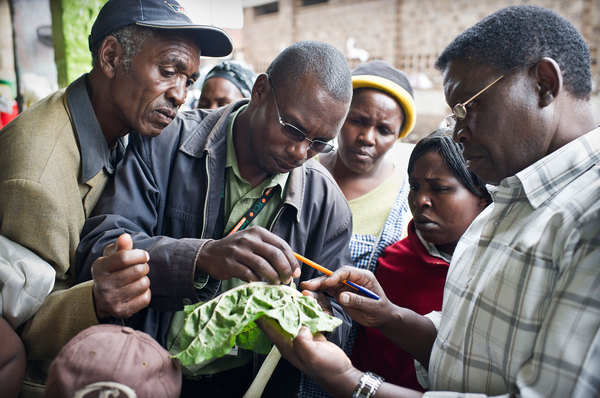Could Spider Venom Be Used As A Novel Insecticide For Major Crop Pests?
A new protein discovered in the venom of Australian tarantulas can also kill insect pests that consume the venom orally. The protein known as orally active insecticidal peptide-1 (OAIP-1) was found to be highly toxic to insects that consumed it, with a similar efficacy to the neonicotinoid insecticide imidacloprid. In particular, the protein was found…
Leave Them Bee- The Honeybees That Fearfully Avoid Hornets
In bees, fear is shown through avoiding dangerous food sites, thereby reducing the pollination of plants at the site. Scientists in this study looked at hornets (Vespa velutina and Vespa tropica) preying on the Asian honeybee (Apis cerana) in China. The hornets hunt bees on flowers and are themselves attacked by bees in defense. The…
Update: Plant Health News (25 Sep 13)
We’ve selected a few of the latest stories about plant health. Records this week include the identification of plants’ natural defense mechanisms against pests, the first report of tomato yellow spot virus in Brazil and recordings of foliar necrosis of potato in India.
Resolving pest problems in Trinidad and Tobago
Article by Shamela Rambadan, CABI Country Coordinator. In Trinidad and Tobago many Plantwise plant clinics have been implemented to provide free information and advice to smallholder farmers. To date there are 8 plant clinics in Trinidad and 2 are planned for Tobago. CABI Plantwise is partnered with the Ministry of Food Production with extension workers from the Ministry and…
Plantwise visits ‘open source GIS’ conference, FOSS4G 2013
On Thursday 19th November, I attended the ‘Free and Open Source Software For GIS’ (FOSS4G) conference in Nottingham, UK with two of my colleagues from the Plantwise Knowledge Bank. The conference, organised by OSGeo, had the strapline “Geo For All” and aimed to show that the tools that this Geographic Information Systems (GIS) community is…
Days are numbered for pests in Kenya’s irrigation schemes
Report by Peter Karanja and Abigail Rumsey Between May and July this year, 22 new plant clinics were established in Kenya. Nine of these clinics were launched by the Smallscale Horticulture Development Project (SHDP), which has been funded by the African Development Bank to help smallholder farmers increase the amount that they produce and earn…
Warming Climate Marches Pests and Pathogens Polewards
The distribution of plant pests and pathogens has been observed to be moving away from the equator towards the North and South poles and inhabit areas previously too cold for their existence. This threatens to increase the percentage of crops lost annually to pests and pathogens and subsequently raises major concerns over global food security. A…
Plantwise Photo Of The Month- September
This photo was taken in July when data management training and Module 4 training took part in Sri Lanka. Twenty-seven participants took part in the Module 4 training, in which methods for managing and monitoring clinic data collected at plant clinics in Sri Lanka were discussed.
Update: New Pest & Disease Records (21 Aug 13)
We’ve selected a few of the latest new geographic, host and species records for plant pests and diseases from CAB Abstracts. Records this fortnight include a new species of rust fungus from India, the occurrence of Sclerotium rolfsii causing collar rot to Peperomia glabella in Argentina and the first report of the giant stem nematode Ditylenchus gigas from broad bean in…
Black Sigatoka Ravages Caribbean
Caribbean banana farmers are abandoning fields where crops have been badly affected by Black Sigatoka disease. Black Sigatoka has badly affected several countries in the region, including Dominica, St. Lucia, Grenada and Guyana. Black Sigatoka is considered the most destructive disease of bananas and plantains and is caused by the fungus Mycosphaerella fijiensis. It first arrived in…

